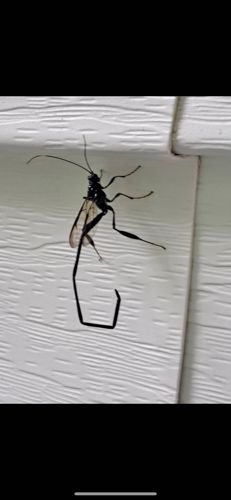Ensign Wasp
Scientific Name: Evania appendigaster (a common species, though other Evaniidae species also exist)
Order & Family: Order Hymenoptera, Family Evaniidae
Size: Typically 5-10 mm (0.2-0.4 inches) in length, excluding the long, U-shaped ovipositor or 'tail' in some species.

Natural Habitat
Ensign wasps are found globally in areas where cockroaches are prevalent, often indoors in homes, restaurants, and other buildings, as well as outdoors in gardens and natural environments. They are particularly drawn to areas with high cockroach populations.
Diet & Feeding
Adult ensign wasps feed on nectar and honeydew. The larvae are parasitoids of cockroach oothecae, consuming the eggs of cockroaches.
Behavior Patterns
Adult ensign wasps are often seen searching for cockroach oothecae (egg cases) in cracks and crevices, or on surfaces where cockroaches are active. The female wasp lays a single egg inside a cockroach ootheca. The developing wasp larva consumes all the cockroach eggs within the ootheca.
Risks & Benefits
Ensign wasps are beneficial insects as they are natural predators of cockroaches, helping to control cockroach populations. They pose no direct risk to humans; they do not sting or bite and are not venomous.
Identified on: 8/26/2025